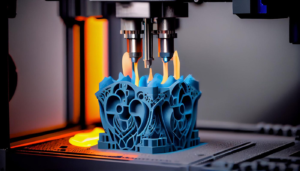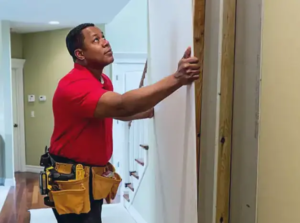Surgical procedures involve cutting or removing an organ, tissue or other body part. Procedures that remove an entire organ or tissue end in -ectomy. Examples include a liver lobectomy and kidney nephrectomy. Those that destroy an organ or tissue use energy-transmitting devices like electrocautery/fulguration, laser or focused ultrasound. Contact Copper Mountain Surgical now!
The training approach for surgeons learning to adopt new technology or techniques should be disease based and not merely technology driven [22]. Surgeons should also have knowledge of alternative treatments to be able to manage patients with complications following surgery.

Many surgery centers now offer their patients financing arrangements that can be used for non-emergency procedures, such as breast lifts and facelifts. These programs allow patients to finance their procedure at low interest rates and make payments over a period of up to six months. They can be accessed via the internet or over the phone.
This type of patient financing can help surgeons boost their cash flow and reduce their dependence on third-party payers, boosting both profits and patient volume. In addition, it can increase patient satisfaction and enhance the experience of care. These benefits can be significant for small practices that do not have the capacity to collect large amounts of debt.
It is important for a surgical practice to clearly explain how its in-house financing works to patients. They should also explain what happens if a patient misses a payment and the implications of that event. The practice should also provide a list of lenders that are available to patients who cannot afford healthcare financing offered by the surgery center.
Many hospitals require a payment before a procedure, depending on the type of service and insurance coverage. Some offer a discount to patients who pay upfront, while others have a specific requirement that is based on the estimated cost-sharing. While these policies are an important step, more can be done to improve price transparency and consumer protections. For example, patients enrolled in high-deductible health plans may not know how much their copays and deductibles will be, and they may have trouble meeting these expenses. As a result, they may choose to delay their procedure or seek care at a higher-cost facility that does not offer the same financing options.
Crowdfunding
Orthopedic crowdfunding has ushered in a new era of medical advancements, as individuals can now directly fund life-changing orthopedic surgery and technology. While this democratization of funding has accelerated orthopedic innovations, it also poses significant challenges for the health system and society.
These challenges include ethical promotion, privacy concerns, and the broader impact of crowdfunding on political determinants of health. These issues require careful consideration, as crowdfunding is a powerful force in global governance and has the potential to shape social norms, influence healthcare decision-making, and exacerbate health disparities.
This paper explores crowdfunding opportunities through surgical facilities, focusing on campaigns to raise funds for orthopedic surgeries. A mixed-methods approach was used, including a survey of patients, data collection on crowdfunding success and spread, and a qualitative analysis of campaign content. The results suggest that crowdfunding campaigns promote personal stories, which can have profound impacts on patients’ lives and may affect their eligibility for medical resources. However, medical professionals must navigate the ethical implications of promoting crowdfunding campaigns without jeopardizing their professional responsibilities or patient trust.
Crowdfunding offers patients a way to access orthopedic treatments that are otherwise out of reach due to cost constraints or lack of insurance coverage. It also enables surgeons to engage with patients in a mutually beneficial relationship that promotes innovation and compassionate care. Furthermore, community involvement in crowdfunding campaigns can increase awareness about orthopedic conditions and foster a culture of wellness in a broader community. The intersection of these three actors can transform the way that medical funding is sourced and distributed. As crowdfunding continues to grow, it is important for researchers and communities to understand its complex implications for health.
Medical tourism
Medical tourism is a growing industry, and has received increasing attention from researchers and policy-makers. However, few attempts have been made to systematically synthesize what is known about its effects. This scoping review seeks to fill this gap by describing the trends, risks, and consequences of medical tourism.
Medical tourists may experience a variety of complications, including infectious disease outbreaks and unforeseen costs. These complications can be related to both the quality of the care received and the cost of the procedures. Infections associated with medical tourism include CRE infections in patients receiving invasive procedures in Mexico and nontuberculous mycobacteria infections in patients seeking cosmetic surgery in the Dominican Republic. In addition, medical tourists are at risk of developing a variety of other noninfectious complications, such as blood clots and contour abnormalities after surgical wound dehiscence.
Although many medical tourists are satisfied with the quality of their procedure, others have concerns about the safety and reliability of the care provided abroad. Local standards for facility accreditation, provider certification, and patient outcomes may not be the same as those in the United States, and some facilities may advertise themselves without full disclosure of accreditation or certification information. Additionally, patients might not be able to easily communicate with physicians who do not speak their language.
Similarly, follow-up care is often difficult for medical tourists returning from foreign procedures. Frequently, the clinical teams who follow them are unaware of where they obtained their care, and are therefore at greater risk for transmission of locally endemic infections. Improved communication is essential to optimize continuity of care for medical tourists. This includes ensuring that their follow-up physicians have access to the results of their overseas treatment, and are aware of the procedures that they underwent.
Credit cards
The popularity of cosmetic surgery has led to an increased need for effective financing methods. Several options exist, including credit cards and personal loans. These financing tools offer patients the ability to break down the cost of their procedure into monthly payments, but they come with a range of terms and conditions that should be carefully evaluated. In addition to these financing methods, many cosmetic surgeons and medical spas offer in-house payment plans. These can be a great option for patients who want to avoid high-interest rates and are unable to pay for their procedures upfront.
One of the most common ways to finance a cosmetic procedure is to use a credit card, which offers flexible repayment terms and low interest rates. Some cards, such as CareCredit and Alphaeon, are specifically designed for medical expenses and may include promotional periods where the balance is paid interest-free. However, it’s important to remember that accumulating interest charges can still add up over time.
Another financing option is a personal loan, which allows you to borrow a lump sum for your procedure and repay it in fixed monthly payments. Typically, these loans offer lower interest rates than credit cards and can help you save money in the long run. In addition, these loans can provide you with access to additional services, such as anesthesia and follow-up visits.
In-house payment plans are also an excellent option for patients who want to avoid paying interest or those whose insurance won’t cover their desired procedures. By negotiating with their providers, they can often find financing terms that meet their budgets and needs. This approach has the added benefit of fostering transparency and trust between surgeons and patients.
Do-it-yourself
While most people associate surgery with the doctor-patient duo, there are a few situations in which a person may choose to perform their own operation. This is usually a last-ditch effort to save money or in the event of an emergency situation. In the past, these cases were rare but are becoming more common as medical costs continue to rise and insurance coverage is increasingly limited. Below are six examples of do-it-yourself surgery.
Surgical education is often based on hands-on course attendance and surgical simulation devices that are expensive to produce [1]. In addition, some high-end simulators are not widely available in low- or middle-income countries due to their high cost. In this context, DIY (do-it-yourself) solutions have been developed to teach basic surgical skills such as knot tying and laparoscopy by using simple tools that are readily available in the home. However, their effectiveness is not validated.
The COVID-19 pandemic caused a fundamental change in surgical training, which shifted from attendance-based education to distance learning. Many students were left with a limited preparation for surgery and little opportunity to learn to use a scalpel. Interest groups and clubs provided a few short tutorials on suturing using porcine tissue models, but not much more.
To address this, a group of engineering students at the University of Pecs designed and implemented a DIY laparoscopic simulator model for teaching basic surgical skills by combining cheap, widely-available DIY tools with e-learning scenarios. Their work has been published in the journal ACS Surgery and was presented at the 2025 ACS Surgeons and Engineers meeting. The authors are hoping that this DIY tool will be a complement to traditional surgical simulations and provide an affordable solution for remote educational needs in emergency situations and resource-limited settings.







